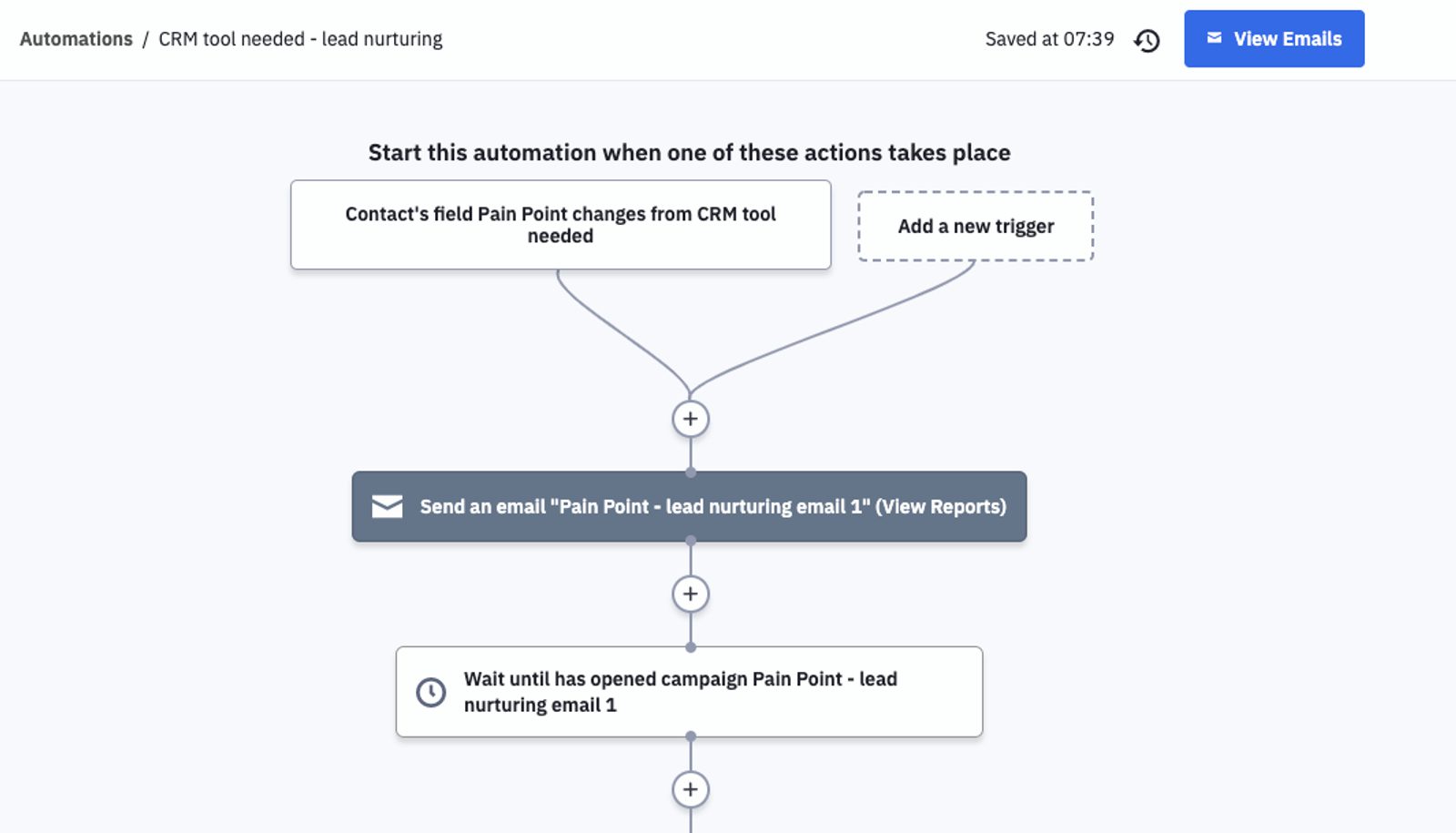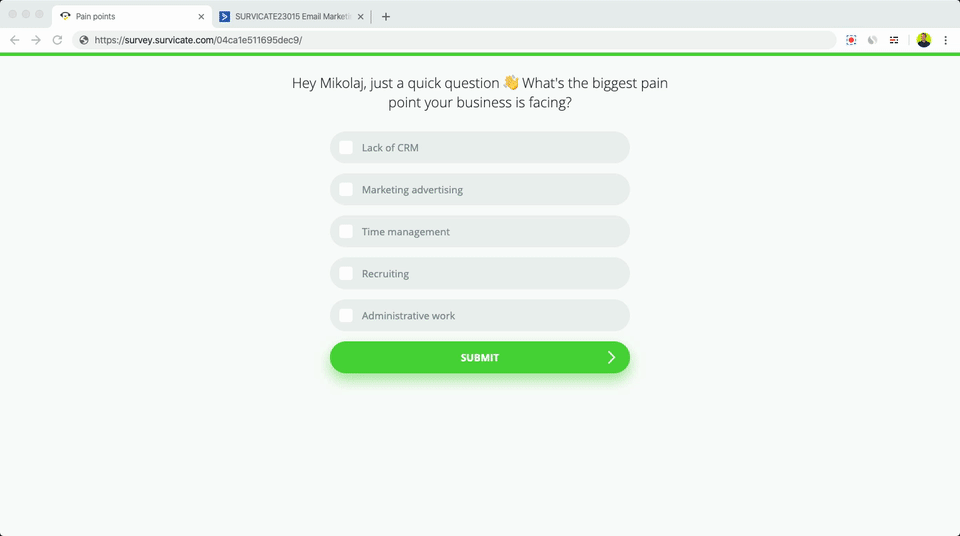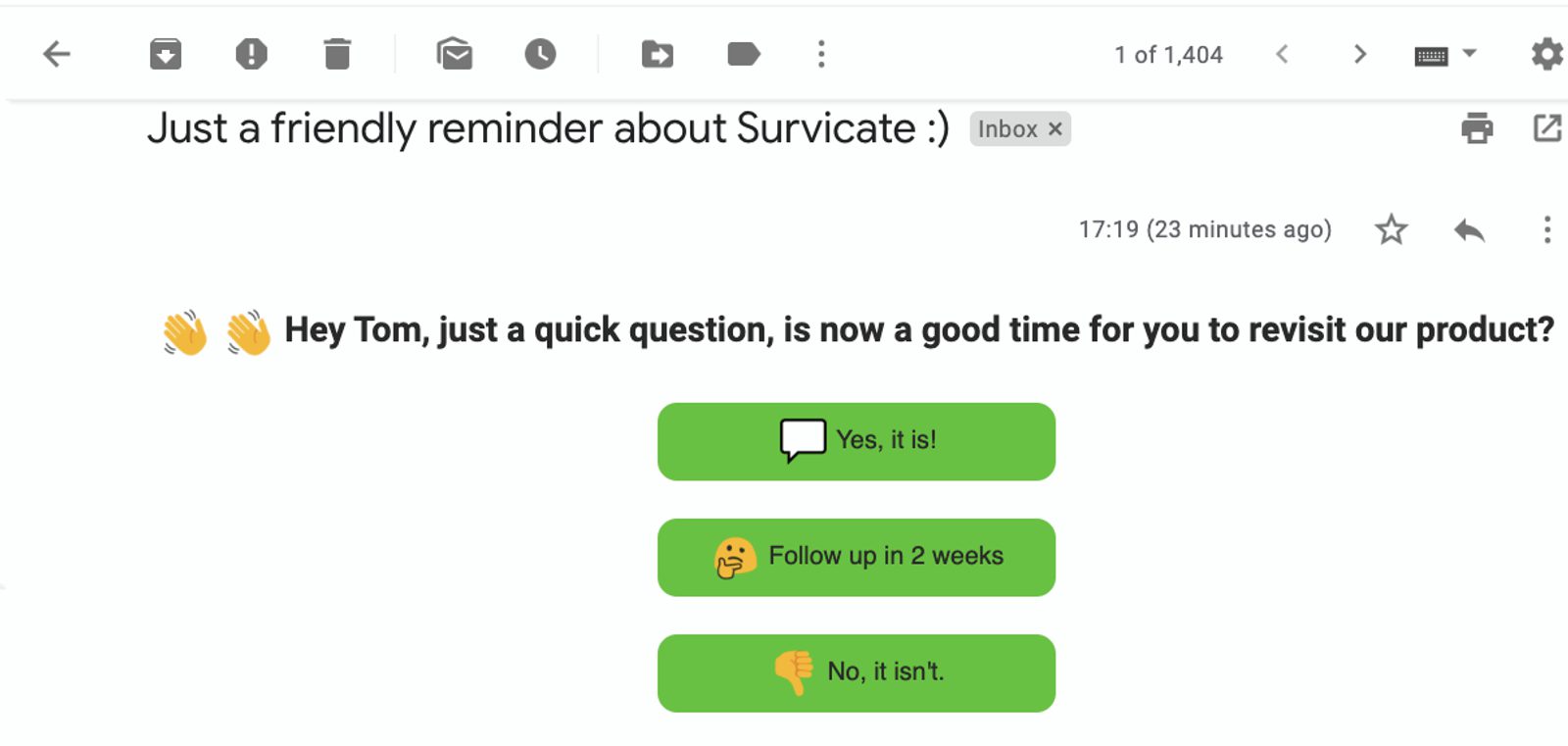What is lead nurturing?

These are all critical bits of information about your leads that will help you map out the best lead nurturing strategy. If you asked all those questions in a lead form, your prospects would be discouraged and wouldn’t submit it. And that’s where surveys come into play!Surveys are the missing piece to effective lead segmentation and nurturing. With a marketing automation platform, you can track user activity and behavior. This certainly helps, but asking your prospects directly will let you get to know them better.That’s why some of the best marketers around the world use surveys as a complementary tool to lead forms and user activity tracking. I’ve found that you need to select a survey tool that integrates natively with your marketing automation platform. This will allow you to map survey responses to your leads’ contact profiles, which in turn lets you trigger follow-up nurture campaigns, improve lead scoring, and personalize your nurturing efforts. You’ll also keep all relevant lead data in one place!

- Use surveys to prioritize Marketing Qualified Leads (MQLs)
- Discover your prospects’ pain points through surveys
- Fine-tune your nurture program with a reader interest and preferences survey
- Reactivate free trial users or silent Sales Qualified Leads (SQLs) with surveys
- When and how should you nurture your leads?
- Key takeaways for using surveys to nurture your leads
1. Use surveys to prioritize Marketing Qualified Leads (MQLs)
- What does your evaluation process consist of?
- How likely are you to make a buying decision within the next 2 months?
- Do you have a budget allocated to this?
- Who, besides you, is involved in making a decision?

2. Discover your prospects’ pain points through surveys
- What are the three biggest challenges you’d like us to solve for you?
- What would you like to accomplish by solving those pain points?
- Who are the likely consequences if you don’t solve them?

3. Fine-tune your nurture program with a reader interest and preferences survey
- What would you like to read about next?
- What is your preferred content type (webinars, articles, blog posts, podcasts, ebooks, videos)?
- How often would you like to receive new content?
- How do you normally keep abreast of industry news?

4. Reactivate free trial users or silent Sales Qualified Leads (SQLs)
- What’s the one thing we can do so you give us another try?
- What are the three features you’d like us to introduce to our free trial?
- Is now a good time for you to revisit our product?

When and how should I nurture my leads?

Conclusion: Key takeaways for using surveys to nurture your leads
- How well you understand your leads
- How well you customize their journey, starting the very moment they become your prospects
This post was contributed by Mikolaj Podgórski at Survicate.
Lead nurturing with personalization turns prospects into customers. Now you can map your survey response fields to custom fields inside ActiveCampaign with the Survicate native app integration. Learn more here.








